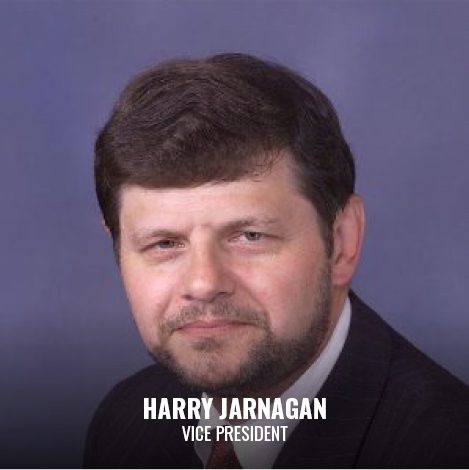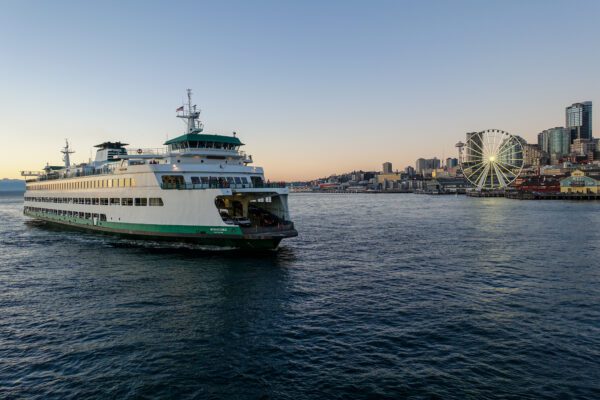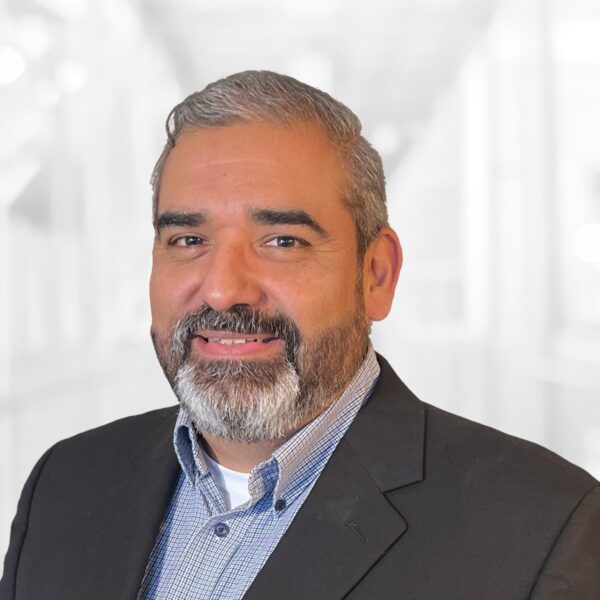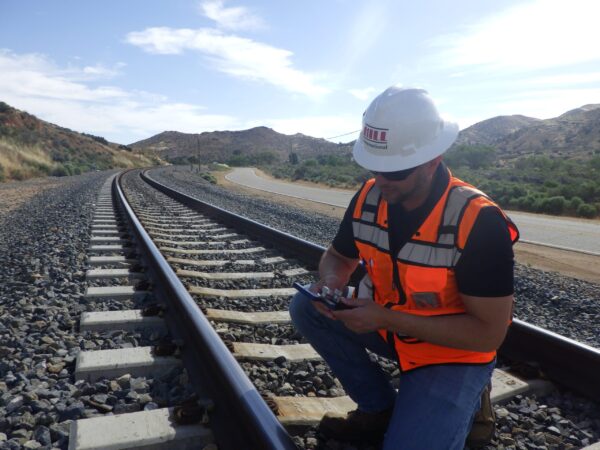
March 12, 2025 | Articles
Get Stoked: Hill International Makes Big Waves in Spain’s Surfing Scene

The largest ferry operator in the U.S., the Washington Department of Transportation’s (WSDOT) Washington State Ferries (WSF) is undertaking an ambitious program to electrify their entire system. WSF currently operates 21 auto-passenger ferries serving 19 terminals on 10 routes in Washington’s Puget Sound. Together, these vessels ferry more than 17 million riders per year. While the ferries are an important transit option and tourist attraction in the region, they are also the source of 145,000 metric tons of carbon annually, representing approximately 72% of WSDOT’s yearly emissions. By electrifying the ferry system, WSF aims to slash carbon output, contribute to a more sustainable state transit system, boost the state’s economy, deliver better health for Washingtonians, and combat climate change.
The Electrification Program includes the conversion of 6 existing vessels to hybrid-electric power, the procurement of 16 brand-new hybrid-electric vessels, the complete electrification of 16 terminals, and comprehensive workforce training to facilitate the operation of a 100% emission-free ferry fleet by 2050. According to WSF’s implementation schedule, WSF is prioritizing the total electrification of its busiest routes in the Central Sound area, enabling the greatest reduction in pollutants during the program’s earliest stages and delivering immediate value to the people of Washington.

“WSF’s System Electrification Program is the largest marine electrification effort underway in the world,” says Hill International Vice President Harry Jarnagan, who is leading WSF’s General Engineering Consultant (GEC) team on the program. “This will have a major impact on the lives of everyone who lives, works, and vacations in the state, but a program of this scale takes a lot of planning, creativity, and collaboration. Our team consists of 21 firms with a range of skillsets and experience in program management, terminal/electrical engineering, marine engineering, environmental engineering, risk management, and much more. To deliver WSF’s vision, we are going to leverage the unique capabilities of each member of the GEC team. The foundation of that approach is partnership.”
Front-End Management
Washington State, WSDOT, and WSF have been planning this program for years. In line with the state’s sustainability goals, Washington Governor Jay Inslee approved $600,000 to study the electrification of WSF’s vessels in 2018, and, in 2019, WSF delivered its 2040 Long Range Plan—including recommendations to electrify the ferry system—to the Washington State Legislature. Then, in 2020, WSF released its System Electrification Plan, featuring high-level planning for the current System Electrification Program. With initial cost estimates for the program at nearly $4 billion, WSF and the GEC team are hard at work planning and delivering this program so that taxpayers and funding agencies receive the best value for their money.
The GEC team began work on March 1, 2023, and collaborated with WSF to start up this program as aggressively and productively as possible. The first few months of work may not seem like much in the context of an almost 20-year, multi-billion-dollar program, but, according to Jarnagan, this is where the stage is set for success. “Good programs need integrated teams that are founded on trust,” he explains, adding that the best time to establish trust is during onboarding, before the pressures of deadlines and the rhythm of daily responsibilities set in.
Immediately after receiving a notice to proceed, the GEC team participated in a kickoff meeting with WSF staff where participants were welcomed as members of the Electrification Program team; developed an awareness of the Electrification Program’s status, where it is headed, and how the team will get it there; engaged in team building; began work on a core principles document; and clarified overall roles and responsibilities, built trust, and a gained mutual understanding of program goals and methods. Shortly after the kickoff meeting, senior leadership from Hill conducted a client expectation survey to gauge WSF’s expectations, work culture, priorities, and any areas subject to risk. This meeting provided valuable insights into WSF’s strategy for delivering the program. Another important aspect of the culture of trust that WSF and the GEC team have established on the Electrification Program is their “zippered” approach, which involves pairing up counterpart staff from WSF and the GEC from the top management tier down to the working level. This approach facilitates collaboration, transparency, and a regular flow of information from both organizations.
In parallel with the early partnering activities, the GEC team collaborated with WSF to commence program work as quickly as possible. Using WSF’s traditional construct of task orders to define, estimate, schedule, and authorize scopes of work, the GEC executed a variety of task orders for program management, terminal engineering, and vessel engineering. The team delivered an especially fast start for vessels. Specifically, the GEC completed risk workshops and risk reports for the retrofit of WSF’s Jumbo Mark II-class ferry vessels to hybrid-electric power and the procurement of new Hybrid Electric Olympic Class (HEOC) vessels. Following the HEOC risk analysis, the GEC team executed a task order to complete the final design for HEOC vessels, to be procured using design-bid-build delivery and an advertisement to shipyards nationwide. The creation, negotiation, and execution of task orders is another opportunity for collaboration and partnership with WSF, and, to date, the GEC team has executed 24 base task orders or task order amendments. Efficiency in this type of contracting has allowed GEC work to commence quickly and in a way responsive to WSF needs.
The Long-Term Teaming Approach

Early collaboration and commencement of production have helped pave the way for a strong, unified management approach. Jarnagan says the team has also implemented robust contract controls to boost efficiency and help maintain that partnership, as well as the integrity of the team, for the program’s duration. “Management of 21 different firms requires strict methodologies in professional service areas, including cost estimation, scheduling, subcontracting, and compliance with federal requirements,” he says. “By observing these methodologies, we can get firms approved for utilization efficiently so that they can mobilize and receive a notice to proceed quickly. This enables us to meet the demanding work schedule of this program. Robust management, with a focus on transparency and trustworthy business practices, underlies our invoicing and progress reporting procedures. That way, we receive payment timely for every dollar invoiced without any disagreements. This has enhanced our reputation with WSF as well-organized administrators of a large volume of diverse services.”
Jarnagan mentions other partnering and trust building activities to take place through the program’s life cycle, such as team building and chartering meetings with the client staff, collaborative goal planning, regular check-ins, and clear lines of reporting and responsibility combined with effective technical and reporting tools. In addition to using industry-standard collaborative software applications such as SharePoint and Bluebeam Revu, the GEC team has also initiated a newsletter for its terminal engineering work called “The Current” which provides progress updates and other news to the client at a more summary level than the monthly progress reports.
In addition, the GEC team has diversity, equity, and inclusion policies to help make certain that all team members know they are welcome, valuable contributors to WSF’s program. Disadvantaged business enterprise (DBE) opportunities are a high priority. The GEC team takes its obligation to meet DBE goals seriously and holds monthly DBE metric meetings with WSF equity and civil rights staff. The team also conducts regular outreach to DBE firms, both for the benefit of the GEC agreement and for the benefit of the Electrification Program at large.
Despite these precautions, very few programs as long as WSF’s can maintain total staff continuity. As the team’s professionals find new opportunities or retire, the GEC will need to contend with the risk of staffing shortages and the associated risk to the program’s management budget. To mitigate the risk, Jarnagan says that the GEC will initiate a forward-looking staffing plan based on experience from a previous WSDOT mega-program. The team will review and renew this plan periodically throughout the life of the program. Combined with GEC leadership’s long-term program planning, the staffing plan will enable flexibility as the program approaches milestones and the activation of new management staff.
Greener Evergreens and a World-Class Ferry System
With an aggressive start-up plan and a long-term project approach founded upon partnership and trust, WSF and their program team have made a promising launch of the impressive System Electrification Program. The GEC will continue to support WSF and their stakeholders with a robust scope of engineering and management services through the program’s life cycle.
“It’s very exciting work, and our whole team looks forward to seeing it through,” says Jarnagan. “I think it will set a precedent not just for other ferry operators, but for transit agencies throughout the U.S. undertaking capital programs to make their systems more sustainable. From a management perspective, the rest of the Hill team and I are going to collaborate with our partners to make sure the program leaves behind a blueprint for the successful delivery of such ambitious programs.”
To learn more about the WSF system electrification program, visit www.wsdot.wa.gov/construction-planning/major-projects/ferry-system-electrification or reach out to Harry Jarnagan at [email protected].
To learn more about partnership opportunities with Hill International, visit www.hillintl.com.
Share

March 12, 2025 | Articles
Get Stoked: Hill International Makes Big Waves in Spain’s Surfing Scene

March 9, 2025 | Articles
Project Manager TJ Pinales: Helping Along the Road in San Antonio

March 4, 2025 | Articles
Balancing the Equation: An Interview with Project Manager Tracy Wiyrick

March 1, 2025 | Articles
A Lifelong Project: Calypso Kyriakopoulou’s Multifaceted Career in Construction

February 10, 2025 | Articles
Dual Delivery: A Viable Strategy for Complex Transit Projects

January 23, 2025 | Articles
Plotting a Roadmap to Success on the Torres de Colón Renovation

December 12, 2024 | Articles
Progressive Design-Build for Rail and Transit Projects: Room to Run

December 9, 2024 | Articles
Unlocking Growth: Maximizing the Benefits of the SBA’s Mentor-Protégé Program

December 8, 2024 | Articles
Mediterranean Luxury a Century in the Making: Four Seasons Resort Mallorca at Formentor